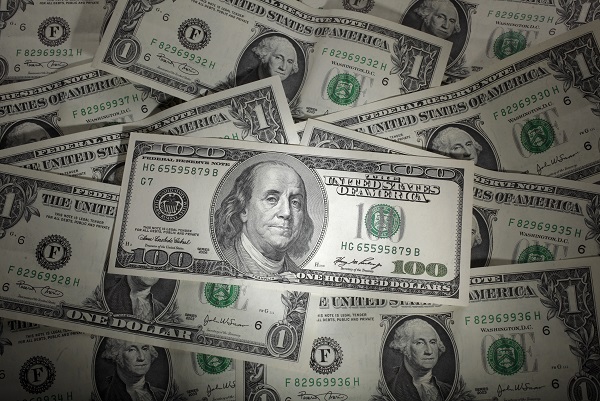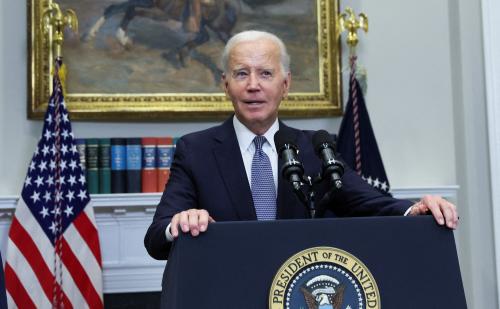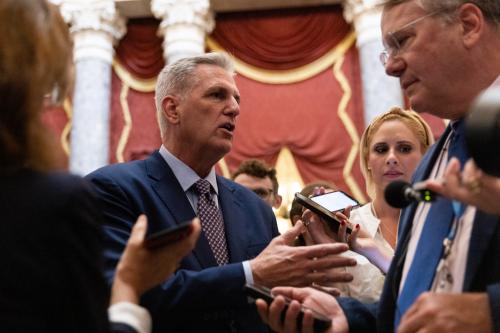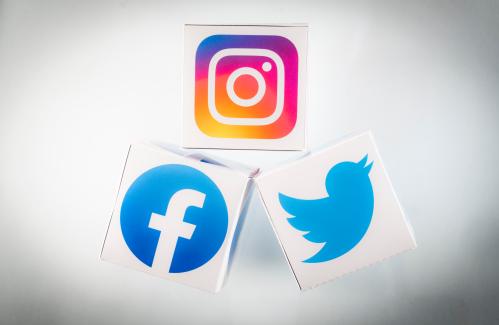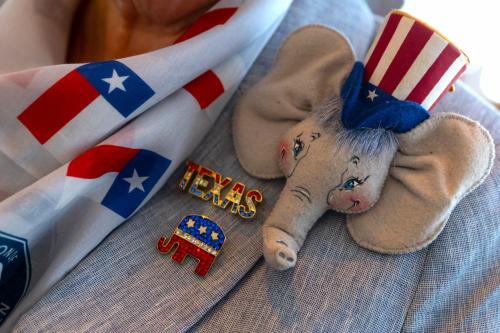In this series, we track key election metrics for presidential candidates throughout the campaign period known as the “invisible primary.”
The list of presidential candidates included in the tracker is based on the candidates listed in AP News, The Washington Post, The New York Times, and Politico’s descriptions of the 2024 field.
As the old saying goes, money can’t buy you love — and it turns out it can’t buy you a presidential nomination either. The 2020 race for the Democratic nomination is a case in point. The winner of the nomination, Joe Biden, spent less than his chief rival — $108 million compared to the $200 million expended by Sen. Bernie Sanders. And in the crucial month of February 2020 before Biden won in South Carolina and captured the nomination days later on Super Tuesday — Biden had less money on hand than all the other candidates who qualified for the debate stage — $12 million. The 2020 Democratic nomination race also featured two billionaires — Tom Steyer, who spent $341 million of his own money and Mike Bloomberg, who spent $1.1 billion of his own money, which yielded very few convention delegates for either individual.
Steyer and Bloomberg are only the latest in a long line of would-be presidents for whom money did not buy love. Back in 1980, Texas governor John Connally spent over $14 million in the Republican primary and won only one delegate. Ronald Reagan captured the Republican nomination that year. At that time, Connally’s expenditure yielded the most costly delegate ever won until, four decades later, Bloomberg garnered only 31 delegates at a cost of over $18 million per delegate.
These caveats aside however, money is one of the easiest ways to judge how an individual candidate is doing in the invisible primary because the law requires candidates to report how much they raise and how much they spend each quarter after they have filed. And it’s fair to say that while having gobs of money may not matter — having “enough” money to get around and mount a campaign is critical.
So, let’s look at the 2024 field so far.
The following chart shows each candidate’s current campaign finance situation from the start of their campaign through the end of quarter two. It includes candidates who entered in the second quarter as well as those who entered in the first quarter. Biden and Trump maintain healthy leads in the money race — over $31 million for Biden and over $35 million for Trump. But Ron DeSantis, who didn’t formally enter the race until May, shows substantial amounts of money as well. All the totals shown in the chart include money raised directly by the campaign and money raised by joint fundraising committees. These committees allow the candidate to raise money jointly with political party committees or political action committees to share the costs of fundraising and split the proceeds.
Besides the overall totals there are a few other things to look at when trying to interpret the meaning of campaign money. As in the rest of life, having money is important but budgeting is equally so. For instance, in Hillary Clinton’s 2008 race against Barack Obama, her campaign failed to budget for all the expensive primaries on Super Tuesday, and she found herself short on that crucial day and having to lend her campaign personal money. In contrast, the Obama campaign had put aside money for Super Tuesday; an important factor that enabled them to eventually win the nomination.1
As the first election day draws closer, cash on hand indicates a candidate’s ability to buy television, radio, and social media and to mount an effective get-out-the-vote operation, which is why the FEC report showing that Trump has spent $20 million on legal fees out of his campaign coffers is making headlines.
With his many court dates coinciding with the primary calendar, Trump may have to spend so much on lawyers that he won’t be able to mount much of a traditional campaign. However, early indications confirm that Trump is not your normal candidate. So far, each indictment seems to help him, not hurt him. Unlike all the others in the Republican primary, Trump is the one candidate who may not need to have cash on hand come the primaries.
At this stage of the invisible primary, low levels of cash on hand can also indicate that a candidate is weak because he or she is having to spend a lot of money to raise money. This explains the case of Gov. Doug Burgum (R-ND). He made national news by offering anyone who contributed $1 to his campaign a gift certificate worth $20 — significantly cutting into his cash on hand.
Burgum’s offer extends only to the first 50,000 donors. That’s because to get onto the stage of the first Republican debate in August, the RNC has ruled that a candidate must have 40,000 unique donors. The Mayor of Miami, Francis Suarez, another long shot Republican candidate without national name recognition, offered front row tickets to watch soccer star Lionel Messi’s first game in Miami. All donors have to do to be in the pool is contribute $1. But Suarez hasn’t stopped at soccer. His super PAC is offering the chance to win a $15,000 scholarship in return for a $1 donation to his campaign. And most recently he took a page out of Burgum’s book and is offering $20 gift certificates for $1 contributions. Another long-shot, wealthy businessman Perry Johnson, is giving donors a free copy of his book for those who donate $1 — maybe not as appealing as a gift certificate or soccer tickets but something concrete for his supporters.
And, of course, there are the very rich, who in politics, as in life, are different from you and me. Vivek Ramaswamy has loaned his campaign a whopping $15 million; Doug Burgum loaned his campaign $10 million, and Perry Johnson has loaned his campaign $8 million. Among the not-so-rich, Marianne Williamson has loaned her campaign $241,000.
Two other highlights are worth noting. First is the amount of money raised by Robert F. Kennedy Jr. — a conspiracy theorist with a famous name whose conspiracies are more attractive to Republican than Democratic primary voters. Proof is the fact that so far, a substantial portion of his money has come from people who previously only gave to Republicans.
We may never know whether this is because of a common ideology (anti-vaccination, for example) or whether it is to weaken Biden. Second is the paltry amount of money that former Vice President Mike Pence has raised. In fact, his money totals are so small that he may not qualify for the Republican debate stage in August, a stunning defeat for a former vice president of the United States.
Right now, the betting is that Biden and Trump will end up with their party’s nomination — but it won’t be because of all the money they’ve raised. The money is simply a reflection of the fact that sitting and previous presidents have wide networks of friends and supporters, enormous public profiles, and great fundraising lists. These beget money in politics, and they can’t be bought. But with the addition of widely televised primary debates has come a circularity to this process. Candidates must raise money to get onto the debate stage and they need to get onto the debate stage to create the large public profiles that beget money. And that is why the money race is such an integral but complicated piece of the invisible primary.
-
Acknowledgements and disclosures
Thanks to Cambron Wade, Anna Heetderks, Jordan Muchnick, and Adelle Patten for their work on data collection and data visualization.
-
Footnotes
- See: Elaine C. Kamarck, Primary Politics: Everything you Need to Know about How America Nominates its Presidential Candidates, (Brookings Institution Press, 2023, page 48

